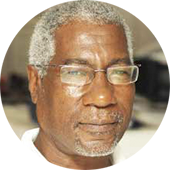
Tensions between the US and China over Taiwan are worsening by the day: Beijing continues loudly and vigorously opposing and condemning any externally-backed unilateral declaration of independence by Taipei; the US last week (September 3) announced it’s ready to sell $1.09 Billion worth of arms to Taiwan; Taiwan is conducting its own military drills, with mainly American armaments; and neighboring nations are being pressed (even pressured) to prepare for a 21st Century war none wants — and few might survive.
The arms sale, if it goes ahead, will include $355 million for US-made ‘air-to-sea’ and $85 million for ‘air-to-air’ missiles, but the largest portion is a $655 million ‘logistics support package’ for ‘Taiwan’s surveillance radar program’.
Beijing is again loudly objecting and seriously warning the proposed aid package would be a serious mistake, a grave error, another red line — like the ill-advised August 2 visit by US House Speaker Nancy Pelosi, followed by three others by top US officials in as-many weeks.
But Washington isn’t listening.
Nor is Taiwan…
According to Asahi Shimbum (which monitors developments in Asia and Japan): ‘Anti-drone defenses are included in a 12.9 percent increase in Taiwan’s defense budget for next year’, which ‘will increase total spending to US $13.8 billion, or roughly 2.4 percent of GDP.’
According to the report, ‘Taiwan also Tuesday (September 6) launched military exercises on the Hengchun Peninsula in the far south of the island, simulating ground warfare against an invading enemy, aided by [American-supplied] Apache attack helicopters.’
Taiwan’s defense spokesman, Lt. Col. Jing Feng-huang, told reporters at the site of the drills: “We will continue to hold the attitude of being prepared for war,”
Interestingly, Washington insists it can trade with China and sell arms to Taiwan – and is (again) ignoring Beijing’s repeated warnings the arms sale will be another unacceptable provocation.
US-led war games have resumed in the Korean Peninsula and Japan is being coerced into siding with America, leaving regional neighbors fearing the consequences of a possible war in Asian waters between two of the world’s most-powerful armies, with the most-sophisticated weapons of mass destruction (WMDs) on Planet Earth.
As part of a continuing series of provocations and responses, flames of war are being vigorously fanned (again) in a region that knows-well the perils of WMDs, most-memorable and worst-of-all the two atomic bombs the US dropped on Japan’s Hiroshima and Nagasaki islands in 1945.
The bombs ended World War II, but at the cost of over 300 000 Japanese lives — and many more permanently harmed, scarred and psychologically damaged and dying in the seven decades since.
However, while the warmongers representing the military industrial complexes continue to fan the war flames, this is a time for restraint, sober and rational assessment and seriously rethinking the wider consequences of any military exchange.
The calls should be louder for peace, not war.
China and Taiwan have repeatedly shown they can dance, once elected island administrations don’t seek to alter the status quo.
Indeed, between 2008 and 2016, Beijing and Taipei enjoyed the strongest-ever level of cooperation – and under the party that established today’s Taiwan.
The Kuomintang (KMT) fled to Taiwan after being defeated in the mainland civil war by the People’s Liberation Army (PLA) in 1949 and ran the island with an iron fist up to 1996, when the first elections were held, which it won.
But the KMT lost in 2000 to the Democratic People’s Party (DPP), which served for eight years, departing in scandalous disgrace in 2008.
The KMT returned to office that same year, following which Beijing and Taipei tactically agreed to disagree on which is the real ‘One China’ and signed-up to a joint consensus on three basic points: No Independence, No Merger, No War.
The two former foes showed the world they could coexist – a two-term, eight-year state-of-play welcomed by both sides, with Cross-Strait trade and tourism flourishing like never-before.
But the DPP returned to office in 2016 – and not only dismantled the strong mainland ties inherited, but also tore-up all related agreements.
The mounting escalation of tensions forces Asian neighbours and the rest of Humankind to worry while Washington and Taipei, supported by powerful allies, continue pursuing a mutual policy of feigning plausible deniability to justify strategic ambiguity, at the cost of endangering not only the lives of 24 million Taiwanese, but also millions of Chinese in neighbouring Fujian province (where most Taiwan families originate) and in the wider region.
Worse, while seeking virtually impossible support for entry into United Nations (UN) organisations — without China’s necessary approval — Taipei continues calling (every year) on its independent allies to continue blindly supporting such lost causes, at great costs to their international credibility.
Some (not all) do include calling for Taiwan to access meetings of UN agencies like the World Health Assembly (WHA), the International Police agency (Interpol) and the International Civil Aviation Organization (ICAO), but never enough to convince any of the 188 nations that recognize Taiwan as being part of China, to change their minds.
With the 2022 ICAO annual general meeting slated for September 27, Taiwan is (yet again) calling on its diplomatic allies and the international community to support its recurring call for a place at the table, among independent nations.
As always, that simply won’t happen without China’s approval, just like no amount of US arms sold to Taiwan will ever bring the island to a stage of ever being able to successfully repel any military intervention by the PLA.
Meanwhile, Chinese on both the mainland and island are this year observing the annual mid-autumn festival (or Moon Festival) in the middle of the most severe heatwave and lowest rainfall in recent history, also with clouds-of-war also hanging low above, forcing Beijing to call on citizens to tone-down their observances of the upcoming 73rd anniversary of the founding of the People’s Republic of China (PRC) on October 1.












